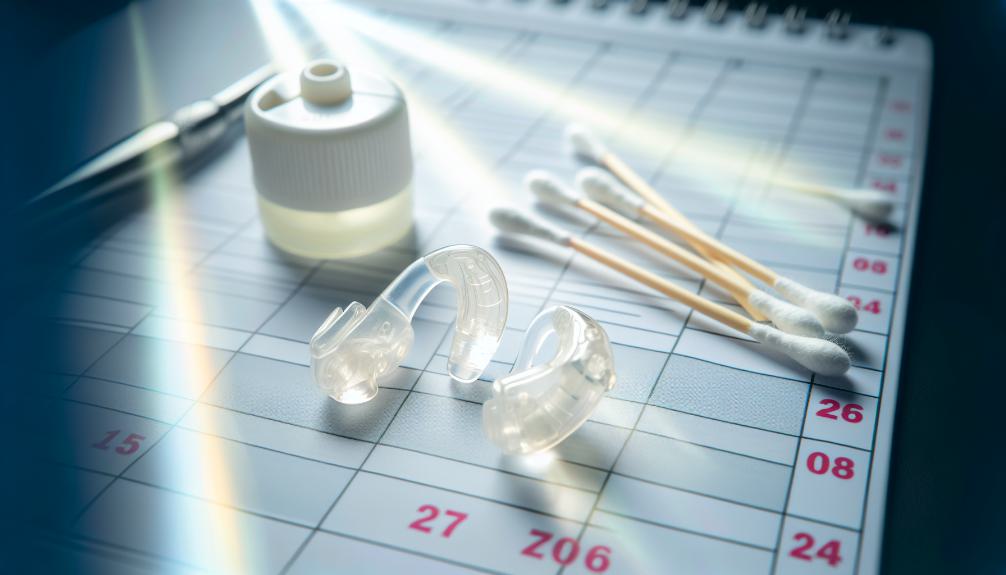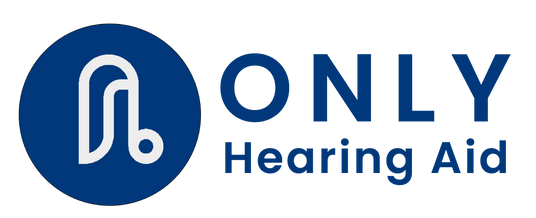
White Noise for Tinnitus: Finding Your Perfect Sound Solution
White Noise for Tinnitus: Find Your Perfect Sound Solution
You should clean your hearing aids daily using a soft cloth and brush to remove earwax and debris. Perform type-specific deep cleaning weekly—focusing on components like tubing, microphones, or receivers. Monthly, check vents, tubing, and contacts for ideal performance. Adjust your cleaning frequency based on lifestyle (active, humid environments need more attention). Don't skip professional cleaning every 4-6 months with your audiologist. This three-tier approach will extend your device's life and keep you hearing clearly.
Key Takeaways
- Daily cleaning is essential for all hearing aids, including wiping with a soft cloth and checking openings for debris.
- Weekly deep cleaning varies by hearing aid type, focusing on specific components like tubing, microphone ports, and sound outlets.
- A monthly maintenance routine should include checking acoustic vents, tubing, battery contacts, and microphone openings.
- Cleaning frequency should increase in high humidity environments, dusty workplaces, or for those with active lifestyles.
- Professional cleaning by an audiologist is recommended every 4-6 months, even without performance issues.
Daily Cleaning Essentials: What Every Hearing Aid User Should Do
What's the simplest way to protect your investment in better hearing? Daily cleaning! Think of your hearing aids like your teeth—they need a quick brush every day to stay in top shape.
Each night, wipe your devices with a soft, dry cloth to remove earwax and moisture. It's like giving them a mini spa treatment after their hard day's work!
Check the openings for debris using a cleaning brush (the one that came with your aids), and keep the battery compartment open overnight to let any moisture evaporate.
Weekly Deep Cleaning Protocol for Different Hearing Aid Types
While daily cleaning keeps your hearing aids functioning, everyone should set aside time each week for a more thorough cleaning session. Think of it as a spa day for your trusty ear companions! Different styles require specific attention to perform at their best.
| Hearing Aid Type | Weekly Cleaning Tools | Special Attention Areas |
|---|---|---|
| Behind-the-ear (BTE) | Soft brush, wax pick | Tubing, earmold connection |
| In-the-ear (ITE) | Wax loop, cleaning cloth | Microphone ports, battery door |
| In-the-canal (ITC) | Wax pick, air blower | Sound outlet, vent openings |
| Completely-in-canal (CIC) | Miniature brush, wax loop | Wax guard, extraction handle |
| Receiver-in-canal (RIC) | Cleaning wire, soft cloth | Receiver opening, wire connection |
Monthly Maintenance Checklist From Audiologists
Beyond those weekly cleaning sessions, audiologists recommend a monthly maintenance routine that guarantees your hearing aids remain in excellent condition long-term. Think of it as your hearing aid's monthly spa day!
- Check acoustic vents - Safeguard these tiny sound channels aren't blocked with earwax or debris that might muffle sounds.
- Examine tubing for cracks - Look for discoloration or stiffness that signals it's time for replacement (usually needed every 3-6 months).
- Test battery contacts - Clean any corrosion with a dry cloth and check that springs move freely for proper connection.
- Verify microphone openings - Gently brush away any particles that might be blocking these critical sound entry points.
You'll extend your hearing aids' lifespan dramatically by dedicating just 15 minutes each month to this simple routine.
Cleaning Frequency Adjustments Based on Lifestyle and Environment
Your standard cleaning schedule isn't always enough for everyone's unique situation. Your lifestyle and environment play huge roles in how quickly your hearing aids get dirty. Just like your car needs more frequent washes during pollen season, your hearing aids might need extra attention in certain conditions.
| Environment | Impact | Cleaning Adjustment |
|---|---|---|
| High Humidity | Moisture buildup | Daily drying, twice weekly deep clean |
| Dusty Workplace | Debris accumulation | Nightly brushing, weekly filter check |
| Active Lifestyle | Sweat exposure | Post-workout wipe down, daily inspection |
If you're a gardener or construction worker, you'll want to clean more often than someone with a desk job. Remember, your hearing aids are like tiny computers—they don't enjoy dirt baths any more than your smartphone does!
Professional Cleaning: When and Why to Schedule Expert Care
Occasionally, even the most diligent at-home cleaning routine needs professional reinforcement. Your audiologist should thoroughly clean your hearing aids every 4-6 months, similar to how you'd schedule regular dental cleanings. Professional cleaning guarantees optimal performance and extends the life of your investment.
When should you book that appointment? Consider these indicators:
- When you notice reduced sound quality or intermittent performance
- If your hearing aids have been exposed to excessive moisture or sweat
- When you see buildup that doesn't respond to your cleaning efforts
- As a preventative measure every 4-6 months, even if everything seems fine
Think of professional cleaning as a spa day for your hearing aids - they work hard for you daily and sometimes need expert attention to function at their best!
Conclusion
You'll keep your hearing aids performing their best by following a simple cleaning schedule: daily wipe-downs, weekly deep cleaning, and monthly maintenance checks. Adjust your routine based on your lifestyle—just like you'd wash your glasses more after a sweaty workout! Don't forget those professional cleanings too. Your future self (and ears) will thank you for taking these few minutes to care for your valuable hearing companions.
